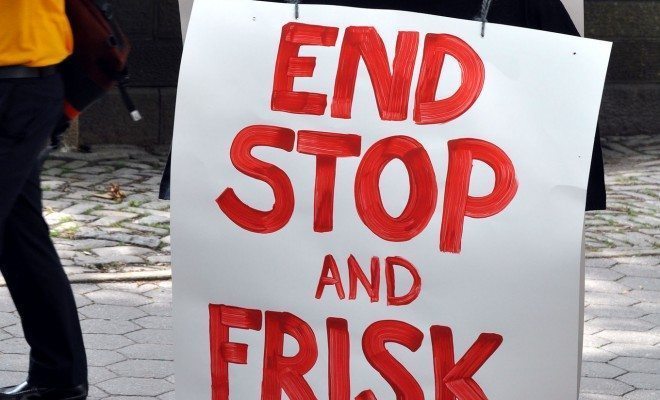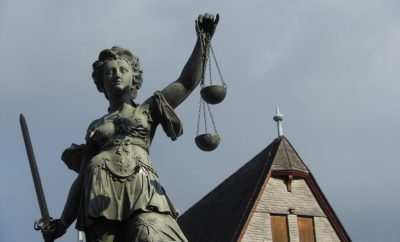 Featured image courtesy of [Michael Fleshman via Flickr]
Featured image courtesy of [Michael Fleshman via Flickr]
Crime
Is the End of Stop-and-Frisk to Blame for the Growth in NYC Murders?
New York City experienced four fatal shootings last Friday night, including the death of Jahhad Marshall, a 22-year-old chef who was killed in Queens. Stacey Calhoun, the victim’s uncle, told the media the next day, “We need stop-and-frisk.” This comes amid a significant call for the return of the controversial NYPD policy. In particular, Stop-and-Frisk supporters cite the nearly 18 percent increase in murders in New York City between January 1 and May 30, 2015 compared to the same period in 2014. Moreover, there was a 7.7 percent increase in shootings–from 403 to 434–during the same period.
In the wake of the increase in murders, particularly shooting-related murders, the heated debate over the efficacy of stop-and-frisk has returned. Supporters of the policy cite the dramatic decrease in crime in New York City since 2002, when stop-and-frisk became more frequently used. Between 2002 and 2011, there was a steady increase in stop-and-frisk related stops from 97,296 to 685,724. In this same period, there was a steady decrease in shooting deaths, as well as overall murders. Proponents argue that the threat of being searched leads to decreased gun possession and thus decreased gun violence. Therefore, many supporters of stop-and-frisk blame Mayor Bill de Blasio’s reigning in of the policy for the increased number of murders in 2015, particularly firearm murders. In a recent interview with FOX News, former NYPD Commissioner Bernie Kerik blamed the increase in crime in 2015 on the dismantling of stop-and-frisk, citing it as the reason for the decrease in crime in New York City.
Contrarily, a lot of evidence suggests that stop-and-frisk was not a successful policy. The policy’s opponents point to the general inefficacy of the stops, about 90 percent of which did not result in further police action. Although former Mayor Michael Bloomberg and others have defended the racial disparity of the stops by asserting that blacks and Hispanics are more likely to commit crimes, the NYCLU found that whites were twice as likely to possess a weapon when stopped. Furthermore, the dramatic increase in stops between 2004 and 2011 did not lead to a dramatic increase in the number of weapons found (176 additional guns found in 524,873 additional stops). Following the controversy over the policy in 2011, the use of stop-and-frisk was dramatically reduced, and while searches decreased by 72 percent between 2011 to 2013, murders fell by 35 percent, and shootings fell by 29 percent. This shows that the continued trend of declining crime in New York City, as well as across the country, that has occurred since 1993 continued even with a dramatic cutback in the use of stop-and-frisk. This evidence seems to suggest that increased use of stop-and-frisk does not guarantee a decrease in the number of murders or shootings.
The bottom line is that it is statistically and logically imprudent to assert that the changing of one police policy is the cause of the increase in murders in New York City so far in 2015. It is possible that stop-and-frisk does limit violent crime; however, it is too soon to tell whether the policy’s removal under Mayor de Blasio is the reason for the additional murders this year. The small sample size of five months, relative to the 24 year trend of decreasing murder, also makes such assumptions fairly weak. Furthermore, the decrease in other crimes, including robbery, felony assault, burglary, and grand larceny point to the issue being more nuanced and complicated than some will admit. Other issues such as the growing civil unrest over police brutality and the possibility of a spike in gang activity are all possible causes. Mayor de Blasio has addressed those who blame his cutbacks on stop-and-frisk for the increased violence and has cited, among other factors, the possibility of gang-on-gang violence.
Contrary to opinions on both sides of the debate, the presence of stop-and-frisk is not an “all-or-nothing” situation. It is possible that the NYPD could return to the frequency of stops that it employed in 2002 while still limiting violence. Perhaps the threat of being searched does limit the possession of guns, as proponents of stop-and-frisk assert. On the other hand, the statistics don’t show that an increase in stops will lead to significantly more weapons seizures. Furthermore, the correlation between greater searches and fewer murders is far from definitive.
It is important to separate legitimate criticism of police tactics from a lack of respect and gratitude for their work. Some sensationalist defenders of stop-and-frisk will try to spin the attacks on the policy as such, and thus delegitimize an important debate. While there is no doubt that those who serve in police forces are brave and essential to our well being, it is important to constantly question and refine police methods.








Comments